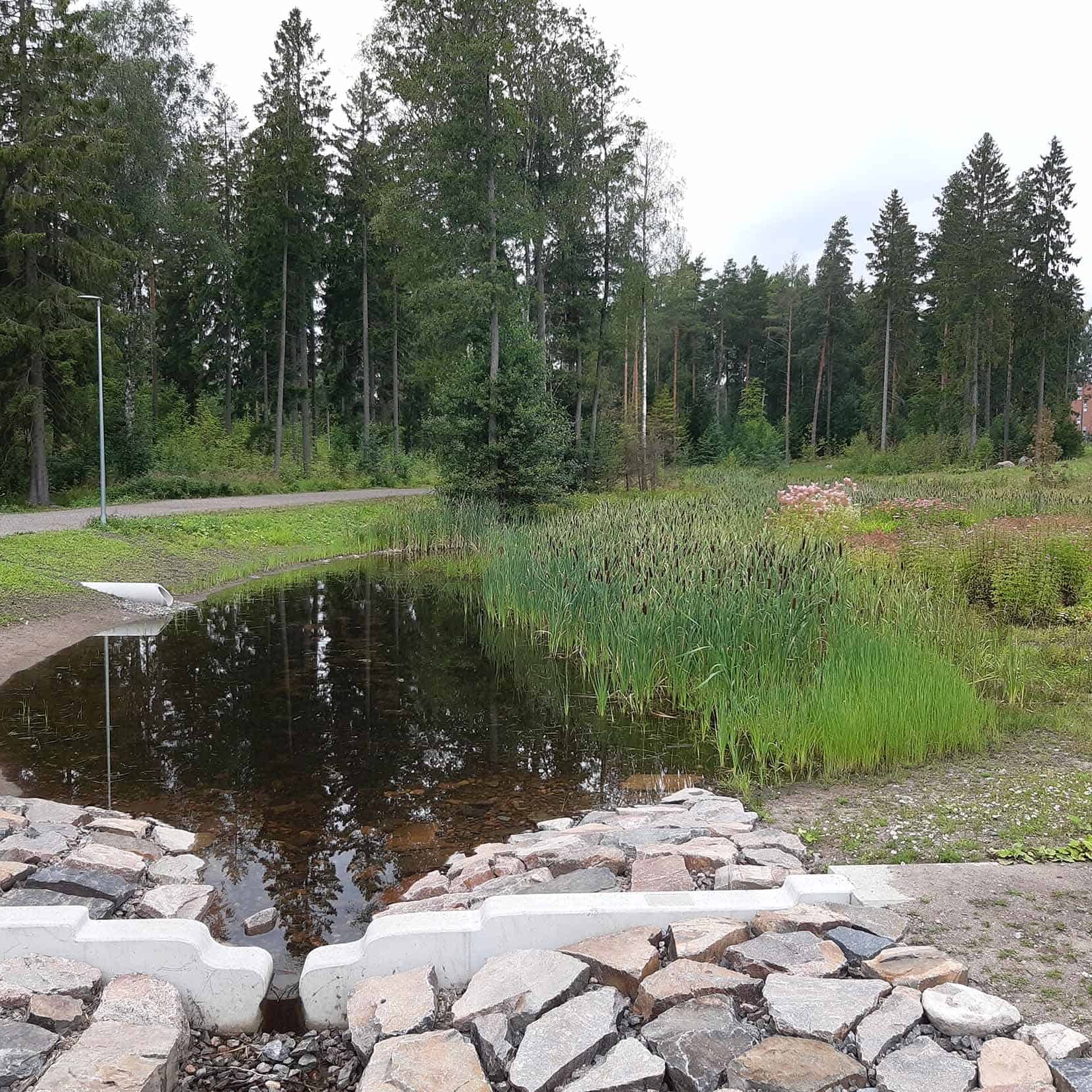Helsinki, the capital of Finland, is the country’s biggest city with more than 650 000 residents. The city is situated in the southern part of Finland and belongs to the hemi-boreal vegetation zone. The amount of original landscape left in Helsinki is still one of the highest in European capitals. Approximately 22% of the land area consists of natural-like boreal forests that are also the most common type of green areas in Helsinki. There is one river and more than 30 urban brooks running through the city. In total, there are more than 40 ponds and most of them are constructed. The city of Helsinki aims to be a green city in the future, maintaining its city-wide urban green infrastructure, offering close-to-home green areas for all residents, protecting threatened wildlife and climate adaptation capacity with nature-based solutions. Nature-based storm water management has become more common in Helsinki, and it has been supported by using the green factor tool in detailed planning. The Kuninkaantammi residential area is a good example of implementing nature-based stormwater management solutions from private yards all the way to the public park.
We will select 5-8 aquatic nature-based solutions in Helsinki, to implement biodiversity monitoring and to collect water samples for isotope and eDNA analyses.


Project funders:
This research was funded through the 2020-2021 Biodiversa and Water JPI joint call for research projects, under the BiodivRestore ERA-NET Cofund (GA N°101003777), with the EU and the funding organisations The Research Foundation - Flanders (FWO), Belgium; Academy of Finland (AKA), VDI/VDE-IT, Germany; National Science Center (NCN), Poland and Fundação para a Ciência e Tecnologia (FCT), Portugal

